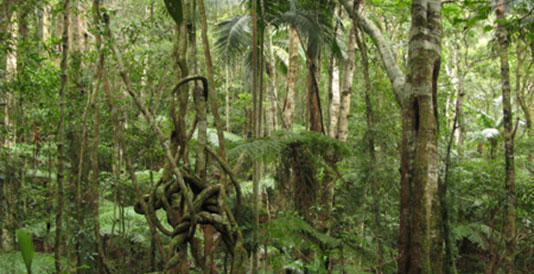 April 10, 2017 (Source: Brett Scheffers) - Dispersal has become one of the most studied traits in ecology and conservation as scientists attempt to understand species distributions and species resilience to environmental instability. A paper led by Brett Scheffers (UF) and recently published in Global Ecology and Biogeography presents a new trait associated with resilience to environment instability—arboreality.
April 10, 2017 (Source: Brett Scheffers) - Dispersal has become one of the most studied traits in ecology and conservation as scientists attempt to understand species distributions and species resilience to environmental instability. A paper led by Brett Scheffers (UF) and recently published in Global Ecology and Biogeography presents a new trait associated with resilience to environment instability—arboreality.
Here, the authors show that vertical (arboreality) and horizontal (dispersal) movement are closely linked and together they increase the resilience of vertebrates to climatic instability in the wet tropical rainforests of Australia.
The authors also present a new climate dimension to biogeography—the microclimate created by trees. Here, they monitored temperature from ground to canopy in tropical rainforests across elevation. They show that low- and high-altitude arboreal species experience similar thermal regimes, whereas low- and high-altitude ground-dwelling species experience little overlap in thermal regimes.
Following the spirit of Janzen’s hypothesis (1967-Mountain passes are higher in the tropics), the researchers found that temperature regimes in canopies are effectively less differentiated across geographical space than on the ground due to greater overlap in hot thermal regimes in the canopy. As such, arboreality (and its strong interaction with horizontal dispersal) may be a critical trait mediating the extinction proneness of species to past and future environmental instability.












